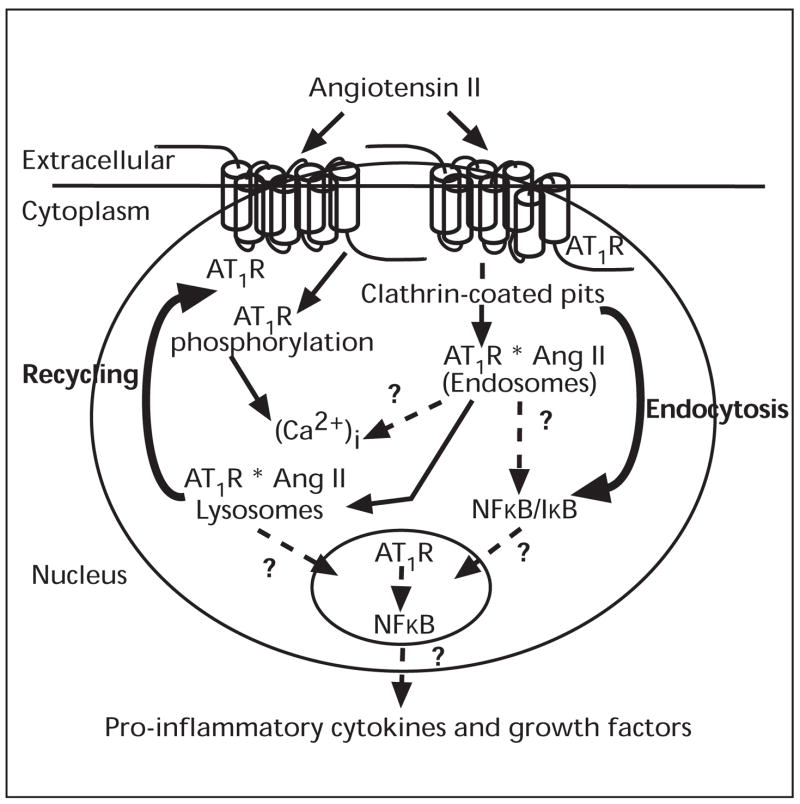Figure 4.
A schematic diagram showing classic and alternative pathways by which extracellular Ang II induces biological actions in proximal tubule cells, namely through activation of cell surface AT1-receptors under acute physiological settings and/or intracellular AT1-receptors (cytoplasmic and nuclear) following endocytosis under pathophysiological conditions. While the classic pathway plays an essential role in the physiological regulation of proximal tubular transport, the alternative pathway may play a critical role in the development of hypertension and Ang II-induced tubulo-interstitial injury.

